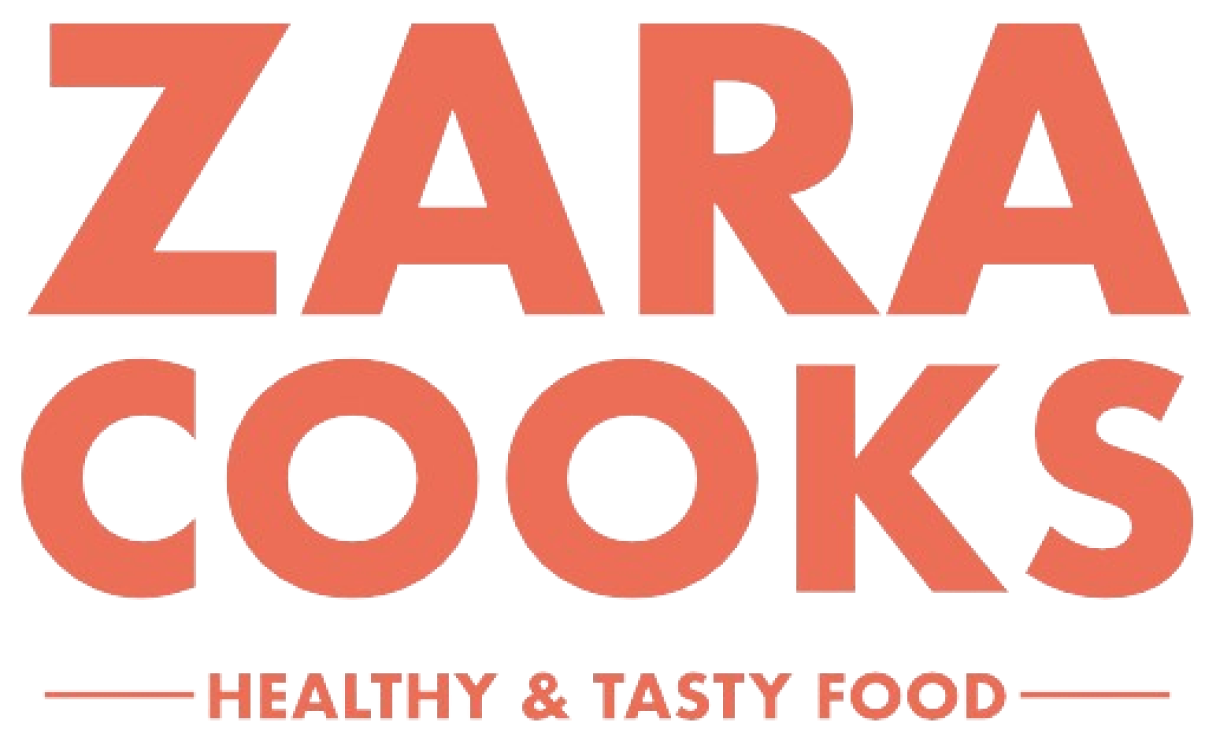Iron is an essential mineral for overall health, and getting enough iron in your diet is crucial, especially if you’re trying to prevent or correct anemia. In this article, we’ll focus on non-heme iron, which is found in plant-based foods, and explore how you can make the most out of these sources while keeping in mind the factors that can block absorption.
What is Non-Heme Iron?
Non-heme iron is the type of iron found in plant foods such as vegetables, legumes, grains, seeds, and nuts. Unlike heme iron, which is readily absorbed by the body, non-heme iron can be trickier to absorb. This is where choosing the right foods and understanding potential blockers becomes important.
Main Sources of Non-Heme Iron
Below is a list of plant-based foods rich in iron. These can form the basis of your daily meals and snacks, especially if you follow a vegetarian or vegan diet or prefer to reduce animal-sourced iron in your meals.
1. Vegetables:
- Dark Leafy Greens: Spinach, kale, and Swiss chard are all great sources of non-heme iron. Spinach contains about 2.7 mg of iron per 100 grams, but oxalates (a naturally occurring compound in plants) make it harder to absorb this iron.
- Broccoli and Brussels Sprouts: These cruciferous vegetables are another source of non-heme iron, though they also contain some calcium, which can inhibit absorption.
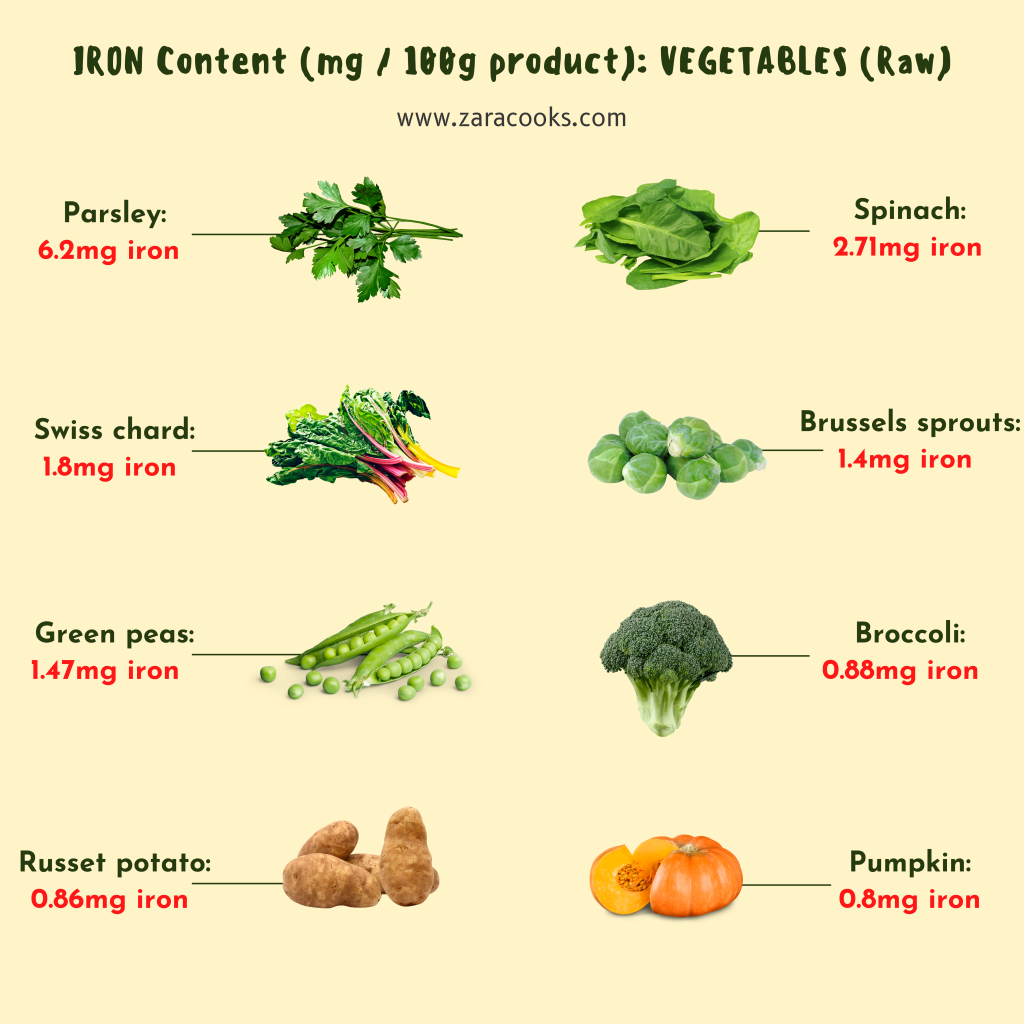
2. Legumes:
- Lentils, Chickpeas, and Beans: Lentils provide around 3.3 mg of iron per 100 grams. However, these foods contain phytates (also called phytic acid), which are compounds that can bind to iron and reduce its absorption.
- Soybeans and Tofu: Rich in both protein and iron, tofu offers about 5.4 mg per 100 grams. Again, the presence of phytates can make it difficult for your body to utilize all the iron.
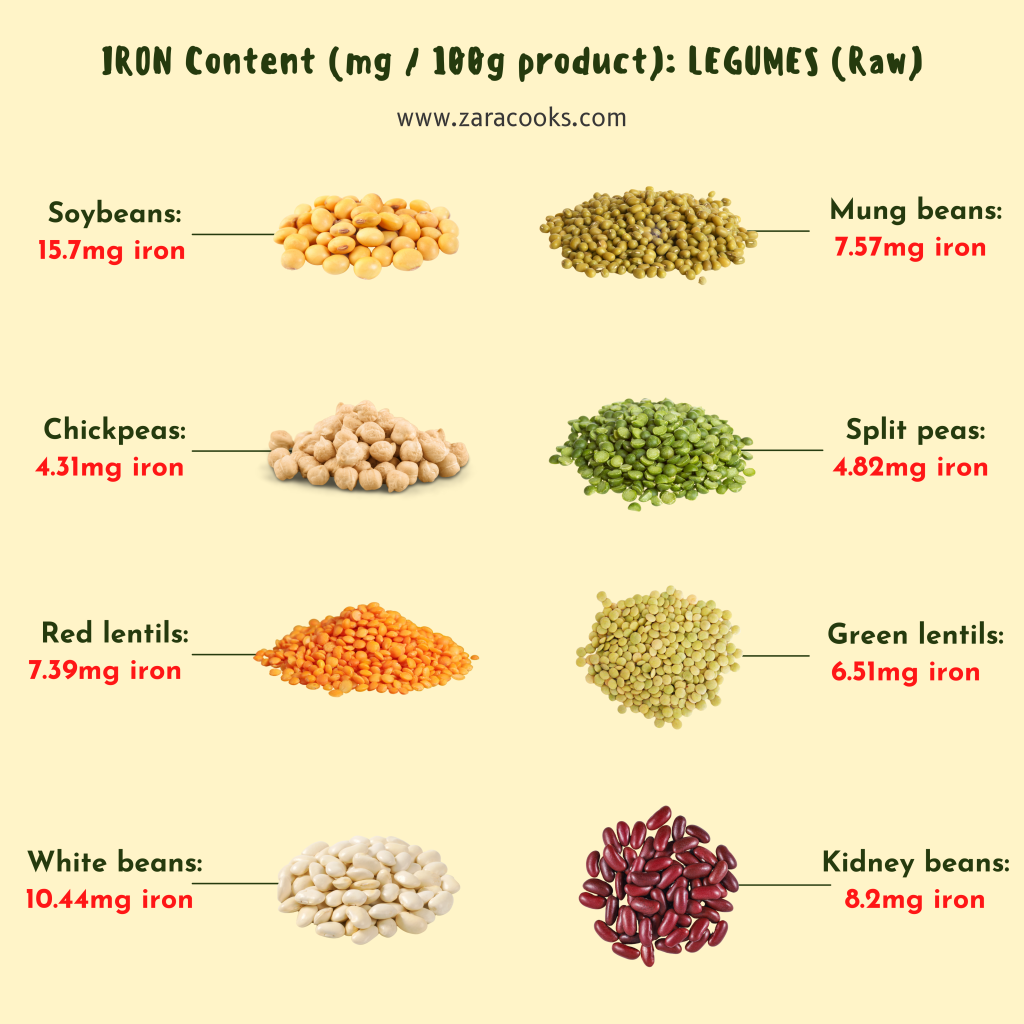
3. Grains:
- Quinoa and Oats: Quinoa is a gluten-free grain rich in iron, providing around 2.8 mg per cup. Oats offer about 4.7 mg per cup. The issue here is that both contain phytates, which act as inhibitors of iron absorption.
- Fortified Cereals: Many cereals are fortified with iron, and these can be a valuable source. But keep in mind that other components in your meal, such as calcium, can still limit how much iron you absorb.
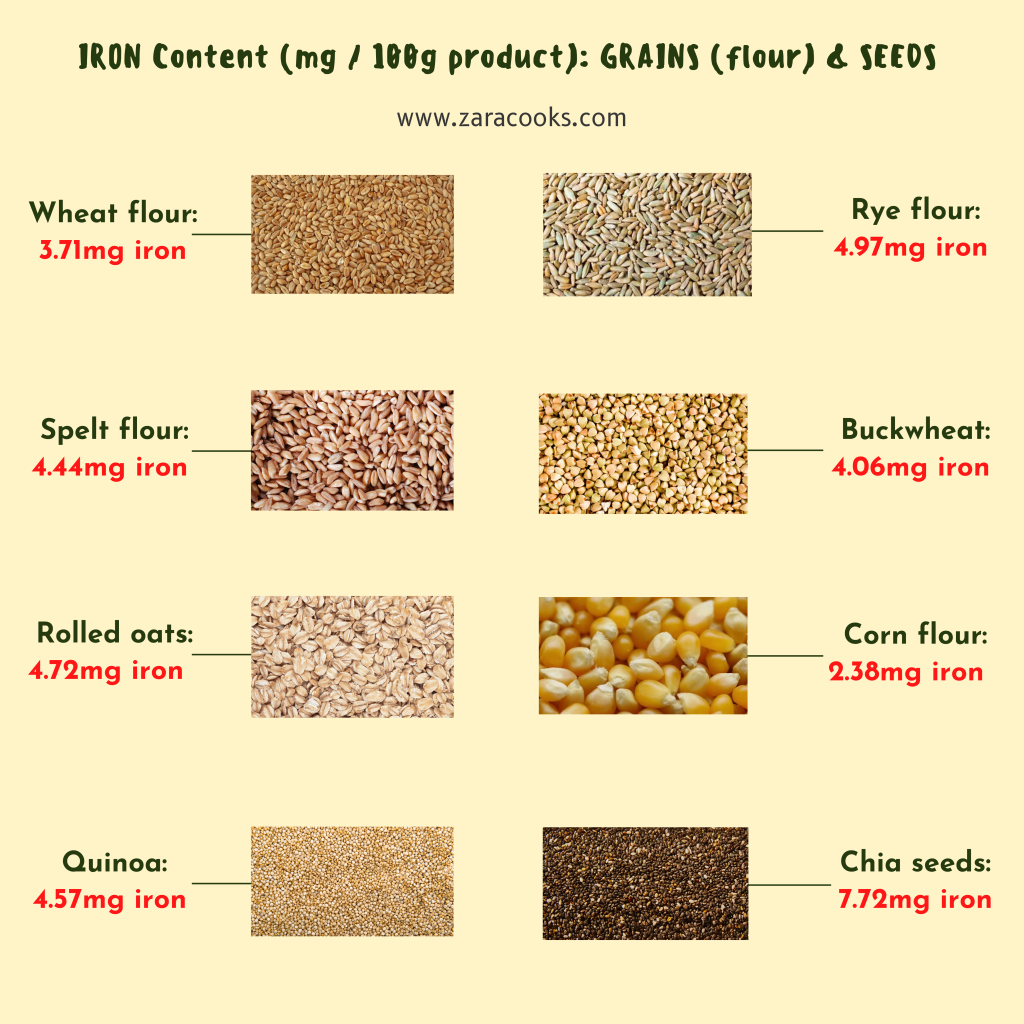
4. Dried Fruits, Seeds and Nuts:
- Pumpkin Seeds, Sesame Seeds, and Sunflower Seeds: These are among the best plant-based sources of iron. Pumpkin seeds, for example, offer around 8.1 mg of iron per 100 grams. However, like legumes and grains, they contain phytates, which may reduce absorption.
- Almonds and Cashews: Cashews provide about 6 mg of iron per 100 grams. While they are a good source, nuts also contain both phytates and tannins, which are polyphenols that bind to iron.
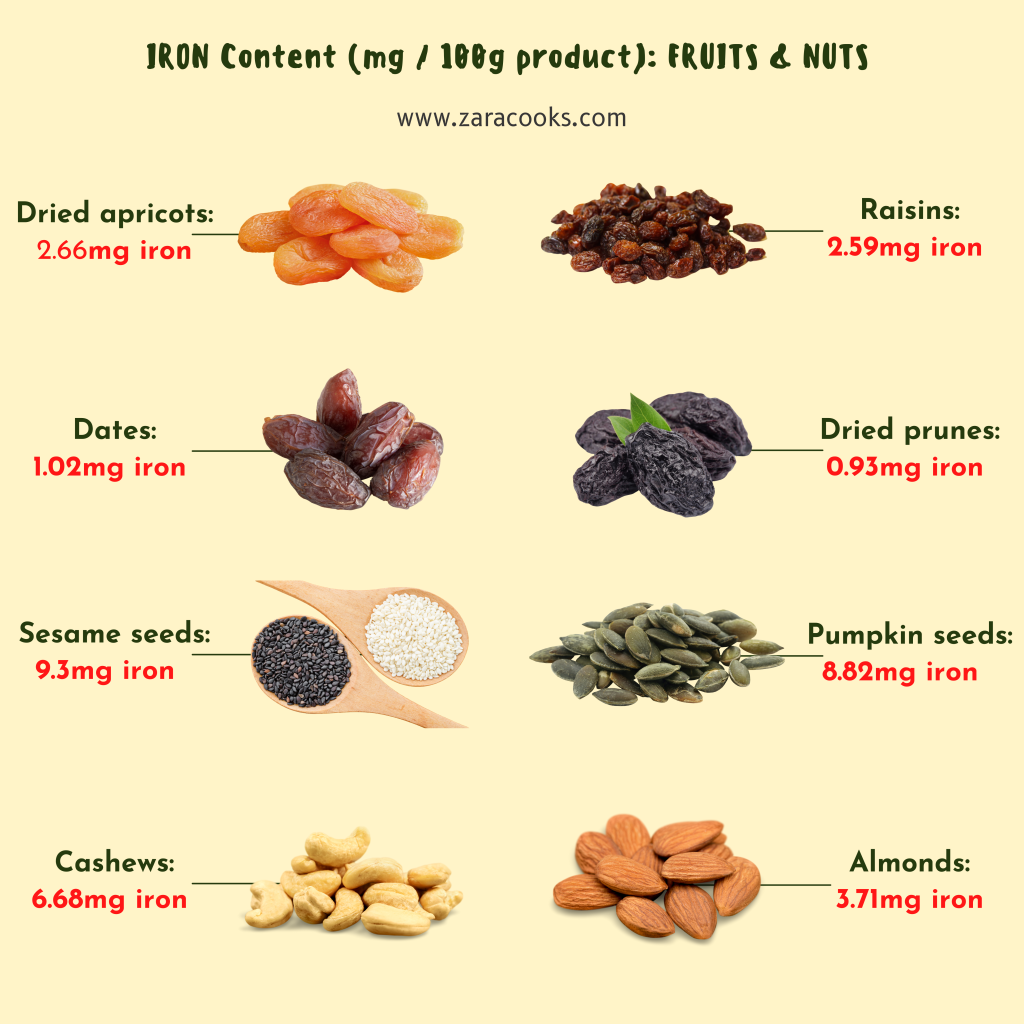
Iron Absorption Challenges: Blockers to Watch For
Though plant-based foods offer plenty of non-heme iron, several naturally occurring compounds in these foods can inhibit iron absorption:
- Phytates are found in grains, legumes, nuts, and seeds. They bind to iron in the digestive tract, making it harder for your body to absorb it. One way to minimize the impact of phytates is by soaking or fermenting grains and legumes before cooking.
- Oxalates are present in foods like spinach, beets, and certain nuts. They can also bind to iron and prevent it from being properly absorbed. Pairing these foods with vitamin C-rich foods can help counter this effect.
- Calcium interferes with iron absorption, especially when consumed in high amounts. Foods like dairy products, tofu, and even fortified plant-based milks can reduce your body’s ability to take in non-heme iron.
- Polyphenols and Tannins are compounds found in tea, coffee, and certain fruits like grapes and apples. They can bind to iron and reduce its bioavailability. If you enjoy tea or coffee, try to consume them between meals instead of with your iron-rich meal.
Enhancing Iron Absorption
Despite the challenges, there are simple ways to enhance the absorption of non-heme iron:
- Pair with Vitamin C-Rich Foods: Foods high in vitamin C (like citrus fruits, bell peppers, and broccoli) can significantly improve the absorption of non-heme iron. Adding a squeeze of lemon to your lentils or having a citrus salad with your spinach can go a long way.
- Avoid Iron Blockers Around Meals: Try to space out your consumption of iron blockers like dairy, coffee, and tea by at least 3 hours before and after your iron-rich meals.
- Soak or Sprout Grains, Legumes, and Seeds: Soaking grains and legumes overnight or allowing seeds to sprout can reduce the phytate content and improve iron absorption.
Conclusion
By incorporating these iron-rich plant foods into your diet and paying attention to the blockers and enhancers of iron absorption, you can effectively manage your iron intake and support overall health. Whether you’re looking to prevent anemia or address an existing deficiency, optimizing your non-heme iron sources is a practical and sustainable way to meet your nutritional needs.
